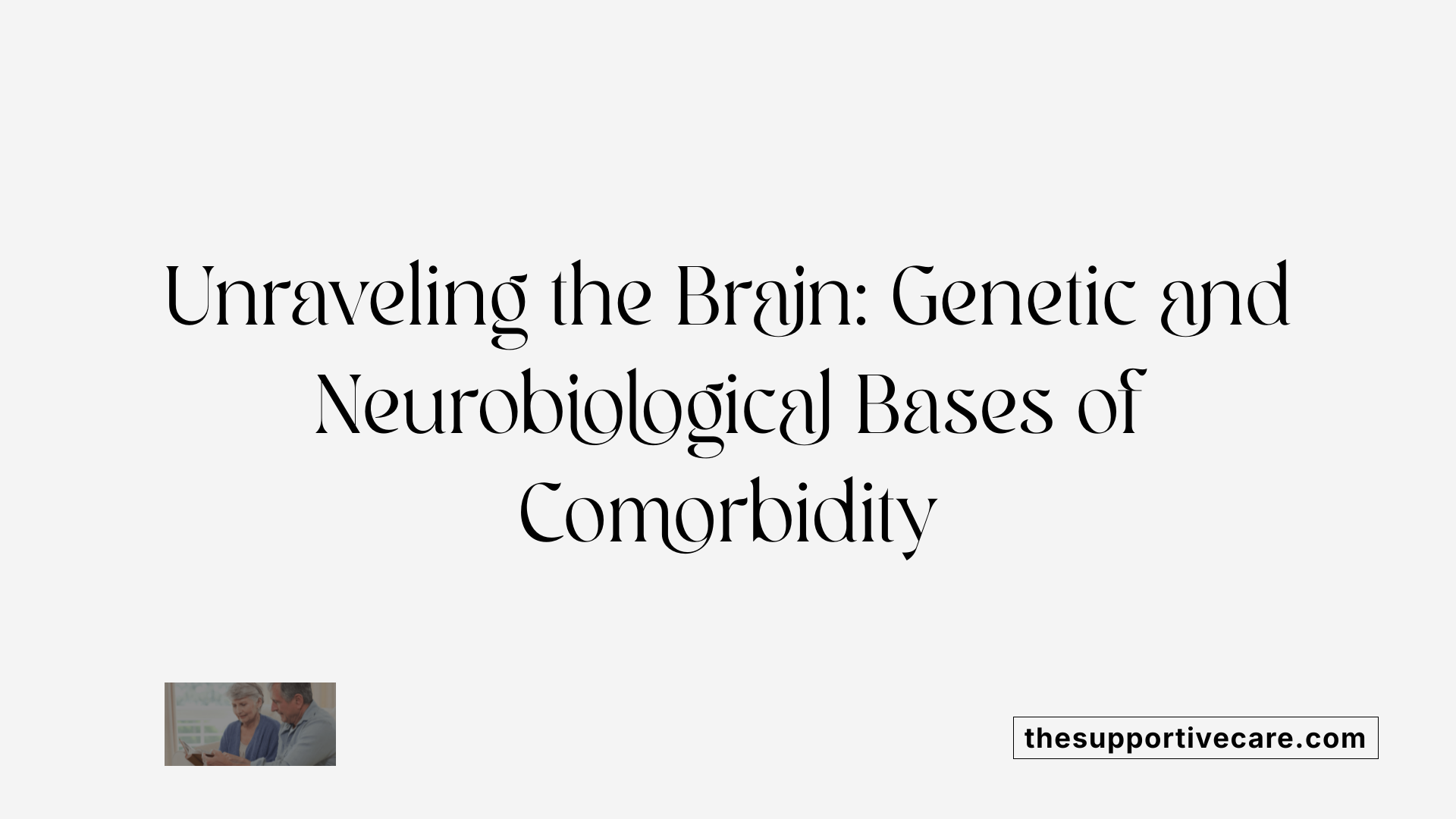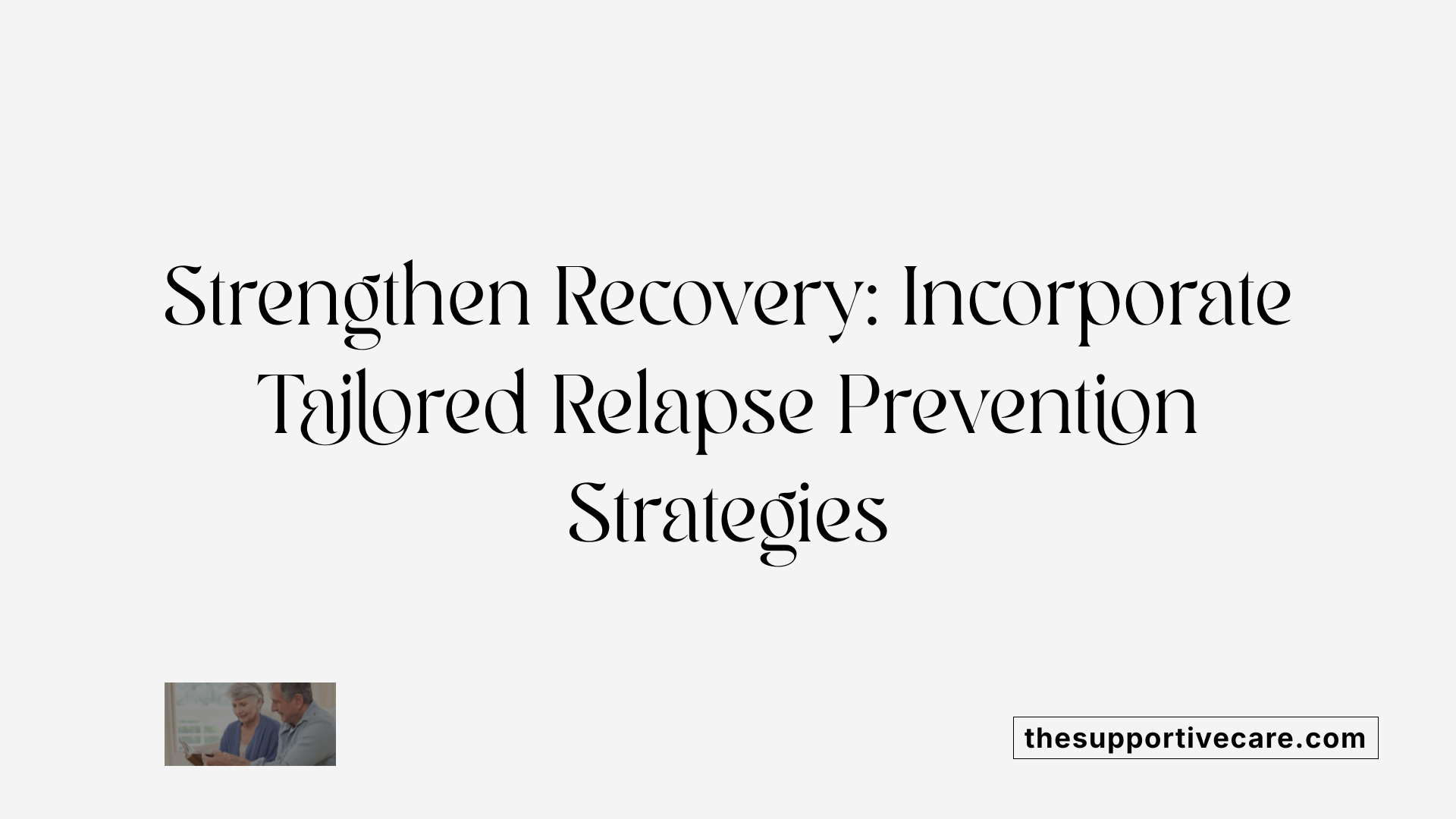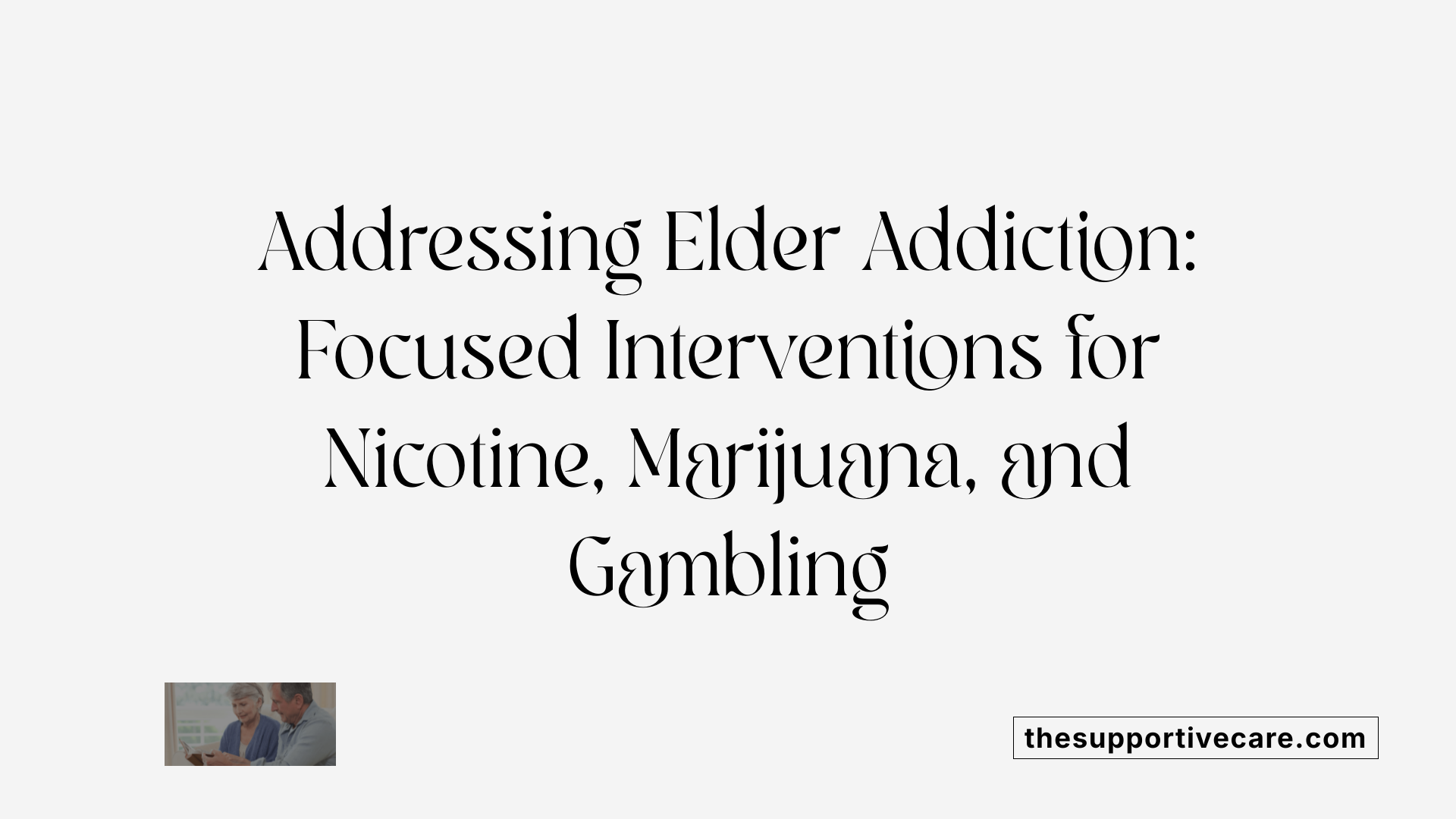A Growing Concern: Chronic Illness and Mental Health Challenges in Seniors
As populations age worldwide, the intertwining challenges of chronic illnesses and mental health issues in older adults have emerged as a critical public health concern. These intersecting conditions not only impact seniors' quality of life but also complicate treatment approaches. This article explores how chronic illnesses contribute to mental health struggles and substance use disorders among seniors, highlights comprehensive treatment strategies, and underscores the importance of integrated care for this vulnerable population.
Prevalence and Impact of Chronic Illnesses Among Seniors
What are common chronic illnesses in adults over 50?
Adults aged 50 and older frequently experience a range of chronic diseases that require ongoing management. These illnesses include hypertension, diabetes, lung disease, heart conditions, stroke, dementia, arthritis, and high cholesterol. Many seniors live with multiple chronic conditions simultaneously; approximately 24.4% of this population have two or more chronic diseases.
How do multiple chronic conditions affect health management?
Having multiple chronic illnesses complicates healthcare for older adults. The presence of several conditions often leads to complex treatment plans and may contribute to inconsistent medication use or difficulty adhering to therapies. Additionally, these overlapping diseases increase vulnerability to substance use, with seniors showing higher rates of alcohol, tobacco, cannabis, prescription drug, and illicit substance use when managing multiple chronic ailments.
What is the relationship between chronic illnesses and mental health?
Chronic health problems are closely linked to mental health challenges among older adults. Diseases such as diabetes and hypertension elevate the risk of depression and anxiety, which are further influenced by stressors like grief, loss, and social isolation commonly experienced in later life. Mood and anxiety disorders are more prevalent in seniors with poor physical health, contributing to functional impairments and increasing suicide risk. Effectively addressing both chronic physical and mental health conditions is crucial for maintaining overall well-being in this demographic.
Mental Health Disorders and Substance Use in Older Adults

What are the rates of depression and anxiety among older adults?
Depression and anxiety are common mental health issues in older adults, often linked to poor physical health and life stressors like loss and social isolation. Globally, about 5-6% of older adults experience major depressive episodes annually. Subsyndromal depressive symptoms, which can cause significant functional impairment, are also widespread. Unfortunately, these conditions are often undertreated in this population, which increases risks such as suicide, especially among older men.
What are the substance use patterns including alcohol, marijuana, and tobacco in older adults?
Substance use remains prevalent among older adults, with nearly 30% reporting alcohol use, approximately 15% smoking tobacco, and nearly 4% using marijuana monthly. Cannabis use, in particular, has risen sharply, increasing by 75% in adults 65 and over from 2015 to 2018. Many older adults use marijuana for medical reasons such as pain management and sleep issues. Smoking rates are notably high among those with mental illnesses like schizophrenia. Alcohol metabolism changes with age, leading to higher blood alcohol concentrations and increased intoxication risk from the same amount consumed as younger adults.
How does physical health influence mental health disorders in older adults?
Chronic physical illnesses such as diabetes, hypertension, heart disease, lung disease, and arthritis significantly impact mental health in older adults by increasing risks for depression and anxiety. Over 24% of adults 50 and older have multiple chronic conditions, complicating their physical and mental health management. Substance use can exacerbate chronic diseases and lead to poorer treatment adherence. Moreover, socioeconomic factors like low income and lower education levels further elevate risks for both physical illnesses and substance use. Managing these intersecting health challenges requires integrated screening, education, and treatment to improve overall health outcomes in older adults.
The Interplay Between Chronic Illness, Mental Health, and Substance Use
How chronic illnesses increase risks for depression, anxiety, and substance use
Chronic diseases such as diabetes, hypertension, lung disease, heart conditions, and arthritis are common among adults aged 50 years and older. The presence of these illnesses substantially raises the risk for mental health problems, including depression and anxiety. For instance, older adults with poor physical health often report higher rates of mood and anxiety disorders. Moreover, chronic illnesses can amplify susceptibility to substance use; individuals managing multiple chronic conditions are more likely to engage in alcohol consumption, smoking, marijuana use, and sometimes prescription or illicit drug misuse. Physical ailments, combined with stressors linked to illness management, can prompt coping behaviors that involve substance use.
Mechanisms by which physical health conditions exacerbate mental health
Physical health challenges contribute to mental health disorders through several pathways. Chronic pain and limitations in physical functioning from illnesses like arthritis or heart disease can lead to feelings of helplessness and social isolation. These emotional responses increase vulnerability to depression and anxiety. Additionally, neurobiological changes triggered by chronic stress related to illness management may impair neurotransmitter systems such as dopamine and serotonin, already implicated in mood regulation. This biological interplay also overlaps with brain circuits involved in reward, impulse control, and decision-making, linking physical health conditions to both mental health and substance use disorders.
Socioeconomic factors influencing this interplay
Low income and limited educational attainment are closely associated with increased risks of chronic diseases and substance misuse among older adults. Economic hardship can intensify stress, reduce access to healthcare, and limit participation in preventive or early intervention programs. These socioeconomic barriers may also result in underdiagnosed or undertreated mental health and substance use issues. Furthermore, stigma and fragmented healthcare services create additional hurdles that prevent comprehensive care addressing both physical and psychological aspects of health.
This complex interaction highlights the necessity of integrated approaches that consider physical health, mental well-being, and substance use collectively. Screening tools, community resources, and multidisciplinary treatment models are essential for addressing these overlapping concerns effectively.
Genetic and Neurobiological Underpinnings of Comorbidity

What genetic vulnerabilities contribute to both mental illness and addiction?
Genetic factors play a major role in the link between mental illnesses and substance use disorders, with 40-60% of vulnerability attributable to genetics. Specific gene variants can increase susceptibility to both conditions. For example, certain gene types heighten the risk of psychotic episodes triggered by marijuana use. This shared genetic foundation helps explain why many individuals experience these disorders simultaneously.
How do brain circuits involved in reward and impulse control overlap in comorbid disorders?
Both substance use disorders and mental illnesses like schizophrenia, depression, and bipolar disorder involve overlapping brain circuits. These include pathways responsible for reward processing, decision making, impulse control, and emotional regulation. Disruptions in these interconnected neural networks can lead to symptoms common across these disorders, contributing to their frequent co-occurrence.
What neurotransmitter systems are implicated in co-occurring mental health and substance use disorders?
Neurotransmitters such as dopamine and serotonin play critical roles in the development and maintenance of both mental illnesses and addiction. These chemical messengers regulate mood, reward perception, and impulsivity. Altered dopamine and serotonin signaling can enhance vulnerability to craving, relapse, and mood dysregulation, underscoring their importance in integrated treatment strategies.
Environmental and Psychosocial Contributors to Comorbid Conditions
Influence of Stress, Trauma, and Adverse Childhood Experiences
Environmental factors such as chronic stress, trauma, and adverse childhood experiences significantly contribute to the co-occurrence of substance use disorders and mental illnesses. These adverse experiences can alter neurobiological pathways, making individuals more vulnerable to both conditions. Stress, particularly when prolonged, affects brain circuits responsible for reward, impulse control, and emotion regulation, which are common to both substance use and mental health disorders.
Impact of Social Isolation, Bereavement, and Financial Stress in Seniors
Among older adults, psychosocial stressors like social isolation, bereavement, and financial difficulties play a substantial role in the development and exacerbation of mental health problems and substance misuse. The loss of loved ones and decreased social networks increase feelings of loneliness and depression, which may lead some seniors to turn to alcohol or other substances as coping mechanisms. Additionally, financial strain and retirement-related stress contribute further to anxiety and depressive symptoms that may coincide with or exacerbate substance use.
Effects of the COVID-19 Pandemic on Mental Health and Substance Use
The COVID-19 pandemic has intensified mental health challenges and substance use, especially in older adults with chronic illnesses. Heightened concerns about infection risk and disruptions to daily routines have increased stress and anxiety levels, functioning as mediators that link pandemic-related worry to greater substance use. Those with multiple chronic diseases face compounded difficulties, including interrupted medical care and social support, elevating risks for both mental health decline and increased consumption of substances like alcohol and tobacco.
These environmental and psychosocial factors underscore the importance of integrated care approaches that address the complex interactions between external stressors, mental health, and substance use, particularly in vulnerable populations such as older adults.
Comprehensive Treatment Services for Substance Abuse and Addiction
What Are Comprehensive Treatment Services for Substance Abuse and Addiction?
Comprehensive treatment services address substance abuse and addiction through a combination of medical, psychological, and social interventions customized to an individual's unique needs. These services aim not just to stop substance use but to improve overall health, functioning, and quality of life, while minimizing harm and preventing relapse.
Components of Comprehensive Treatment Services
Detoxification: This initial step manages withdrawal symptoms safely, often under medical supervision, to help individuals physically stabilize after stopping substance use.
Counseling and Behavioral Therapies: Therapeutic approaches such as Cognitive Behavioral Therapy (CBT) and Dialectical Behavior Therapy (DBT) are employed to address the psychological root causes of addiction, teach coping strategies, and modify harmful behaviors.
Medication-Assisted Treatment (MAT): Medications support recovery by reducing cravings and withdrawal symptoms. For example, Vivitrol helps treat alcohol dependence, Suboxone is used for opioid addiction, and Chantix assists with tobacco cessation.
Support Programs and Relapse Prevention
Ongoing recovery support includes urine drug testing to monitor substance use and referrals to peer support groups or community resources. These programs bolster motivation and provide social networks that are critical to maintaining sobriety.
Engaging multidisciplinary teams and integrating care for co-occurring mental health conditions further enhances treatment success, ensuring that both substance use disorders and mental illnesses are addressed collaboratively.
Overall, comprehensive treatment services combine medical care, therapy, medications, and social support to forge a path toward sustained recovery and improved well-being.
Integrating Mental Health Treatment with Addiction Care
How do treatment services address co-occurring mental health issues alongside addiction?
Treatment services for individuals facing both mental health disorders and substance use disorders (SUD) adopt integrated, multifaceted approaches that target both conditions simultaneously. This dual focus is vital because co-occurring disorders often share underlying biological, genetic, and environmental risk factors.
Evidence-based therapies such as Cognitive Behavioral Therapy (CBT), Dialectical Behavior Therapy (DBT), and motivational interviewing are commonly employed. These treatments are customized to meet the individual's specific mental illness—such as depression, bipolar disorder, or anxiety—and substance use challenges. Medication management may also be included to address psychiatric symptoms and support addiction recovery.
Why is simultaneous treatment important?
Treating mental health issues and addiction separately often leads to reduced effectiveness. Integrated care enhances outcomes by addressing both conditions together, improving symptom management and reducing the likelihood of relapse. Coordinated care also ensures medical, psychological, and social needs are addressed comprehensively, which is essential for sustained recovery.
What are the challenges and systemic barriers to integrated care?
Despite its importance, integrated care faces several challenges. Fragmented healthcare systems often separate mental health and substance use treatment, limiting collaboration between providers. Inadequate resources, lack of provider training in co-occurring disorders, and stigma surrounding addiction and mental illness further complicate access to comprehensive care.
Overcoming these barriers requires expanding insurance coverage for integrated services, enhancing multidisciplinary team approaches, and promoting awareness campaigns. Additionally, community-based programs and telehealth offer promising pathways to increase accessibility and coordination of care.
By investing in integrated, simultaneous treatment models, healthcare systems can provide more effective, person-centered care that addresses the complex needs of individuals with co-occurring mental health and substance use disorders.
Evidence-Based Therapies Utilized in Dual Diagnosis Treatment
What types of therapy are commonly used in addiction and mental health treatment?
Common therapies used to treat individuals with both substance use disorders and mental health issues include Cognitive Behavioral Therapy (CBT) and Dialectical Behavior Therapy (DBT). CBT helps patients identify and change harmful thought patterns and behaviors contributing to their disorders. DBT focuses on emotional regulation, mindfulness, and distress tolerance, which is particularly helpful for comorbid conditions like borderline personality disorder alongside substance misuse.
Motivational Interviewing is also widely used to increase a person's motivation and commitment to change their substance use and mental health behaviors. This client-centered counseling technique helps resolve ambivalence and promotes treatment engagement.
Group therapy provides a supportive environment where participants share experiences and coping strategies, fostering a sense of community and reducing isolation. Family therapy involves close family members to improve communication and resolve relational conflicts that may exacerbate both mental health and addiction problems.
How are therapies adapted for older adults?
Therapies are tailored for older adults by focusing on age-specific challenges such as coping with loss, loneliness, declining health, and social isolation. Group sessions may concentrate on rebuilding social networks and managing depression or anxiety that can accompany aging.
Interventions also integrate strategies like Motivational Interviewing and CBT adapted to be sensitive to cognitive and physical limitations in older populations. Trauma-centered care and support for chronic disease management are emphasized, recognizing that many older adults have multiple chronic conditions that interact with their substance use and mental health.
Additional treatment considerations
Medication-assisted treatment (MAT) is sometimes combined with behavioral therapies to effectively manage withdrawal and cravings associated with substance use disorders, particularly when co-occurring with mental illnesses.
Multidisciplinary and collaborative care approaches ensure that treatment addresses both mental health and substance use comprehensively, improving overall outcomes.
| Therapy Type | Focus Area | Adaptation for Older Adults |
|---|---|---|
| Cognitive Behavioral Therapy (CBT) | Changing harmful thoughts and behaviors | Focus on managing chronic illness, cognitive limitations, loss |
| Dialectical Behavior Therapy (DBT) | Emotional regulation, mindfulness | Emphasis on coping with loneliness, grief, and health decline |
| Motivational Interviewing | Enhancing motivation for behavior change | Nonconfrontational approach adapted for older adults' experiences |
| Group Therapy | Peer support, shared experiences | Social network rebuilding and age-specific group discussions |
| Family Therapy | Improving family communication and support | Addressing age-related family dynamics and caregiving issues |
This holistic blend of therapies, tailored to the unique needs of people with dual diagnoses including older adults, forms the cornerstone of effective treatment models.
Role of Medication in Treating Addiction and Mental Illness

What role does medication play in treating substance abuse and mental health disorders?
Medication serves as a cornerstone in treating both substance use disorders (SUD) and mental health conditions. It helps by reducing cravings, easing withdrawal symptoms, and stabilizing brain chemistry, which are all crucial for recovery.
In the context of addiction, medication-assisted treatment (MAT) uses drugs like methadone, buprenorphine, and naltrexone. These medications are especially effective for opioid dependence and significantly lower the risks of overdose and relapse. MAT supports individuals through recovery by allowing them to focus on therapy and lifestyle changes while managing their symptoms.
For mental illnesses such as depression, bipolar disorder, anxiety, and schizophrenia, psychiatric medications—including antidepressants, mood stabilizers, and antianxiety drugs—help control symptoms. These medications enhance the outcomes of behavioral therapies like Cognitive Behavioral Therapy (CBT) and Dialectical Behavior Therapy (DBT).
Overcoming stigma around medication use is vital. Many individuals hesitate to seek or adhere to medication because of misunderstandings and cultural attitudes. Programs promoted by organizations like SAMHSA (Substance Abuse and Mental Health Services Administration) work to expand access to these treatments and educate the public on their benefits.
By combining medication with integrated, multidisciplinary care, treatment becomes comprehensive. This approach improves long-term recovery chances and supports mental wellness in people facing the complex challenges of co-occurring disorders, including older adults who may have different physiological needs and risks.
In summary, medication is an essential component of addiction and mental health treatment. It provides biological support that complements therapy and social interventions, ultimately promoting sustained recovery and improved quality of life.
Incorporating Relapse Prevention Strategies in Treatment

How is relapse prevention incorporated into addiction treatment programs?
Relapse prevention is a vital part of addiction treatment programs aimed at helping individuals maintain long-term sobriety. The process begins with education about common triggers and awareness of high-risk situations that may prompt a return to substance use. This knowledge empowers individuals to recognize and anticipate challenges.
Developing coping skills and stress management techniques forms the next pillar of relapse prevention. These include strategies such as mindfulness, relaxation exercises, and cognitive-behavioral approaches that help individuals manage cravings and emotional distress without resorting to substance use.
Continued support is crucial for sustaining recovery. Counseling, peer support groups, and aftercare services provide ongoing encouragement and accountability. Such programs often integrate behavioral therapies like Cognitive Behavioral Therapy (CBT) and Dialectical Behavior Therapy (DBT), which have proven effective in addressing both substance use and co-occurring mental health conditions.
For vulnerable populations, including older adults with chronic illnesses, relapse prevention plans are tailored to consider their unique physical and mental health needs. Public health initiatives also support these efforts by reducing barriers to accessing mental health and addiction resources.
By combining education, skill development, and sustained support, relapse prevention strategies in addiction treatment create a comprehensive framework that helps individuals navigate recovery and reduces the likelihood of relapse.
Screening and Identification Challenges in Older Adults
What are the barriers to identifying substance misuse and mental illness in seniors?
Identifying substance misuse and mental health problems in older adults faces several challenges. Stigma remains a significant barrier, as many seniors feel shame or denial about substance use and mental illness. Additionally, healthcare providers often lack specialized training to recognize these issues in older populations. Cultural attitudes toward alcohol and mental health can also hinder open discussions and disclosures.
How do symptoms overlap with age-related conditions?
Symptoms of substance misuse and mental illness often mimic or overlap with typical age-related health problems. For example, fatigue, confusion, and memory issues may be mistakenly attributed to aging or medical conditions instead of depression or substance use disorders. This symptom overlap complicates accurate diagnosis and can lead to under-treatment.
What tools and strategies can improve screening effectiveness?
Effective screening requires tailored approaches for older adults. Tools like the Tobacco, Alcohol, Prescription medication, and other Substance use (TAPS) tool are recommended for identifying substance misuse. Employing nonconfrontational and empathetic communication encourages honest responses. Routine screening in primary care and mental health settings is critical for early detection.
Other strategies include training healthcare providers in geriatrics and addiction medicine, integrating screening into regular health visits, and utilizing multidisciplinary teams. Community-based efforts and telehealth services can expand access and follow-up care, helping to bridge gaps caused by social isolation or mobility issues in seniors.
By addressing these challenges with appropriate tools and sensitive practices, healthcare systems can enhance identification of substance use and mental health disorders in older adults, leading to better outcomes and quality of life.
Physical Health Comorbidities and Their Impact on Treatment
Which chronic conditions are common among adults over 50?
Chronic diseases such as diabetes, hypertension, heart disease, lung diseases, stroke, arthritis, dementia, and high cholesterol are frequently experienced by adults aged 50 years and older. These conditions often require ongoing medical management and add complexity to overall health care for older adults.
How does substance misuse worsen physical health in older adults?
Substance misuse, including alcohol, tobacco, marijuana, and prescription drugs, can exacerbate these chronic conditions. For example, smoking significantly contributes to respiratory diseases and cardiovascular issues. Alcohol and certain drug interactions can increase risks of falls, confusion, and overdose, particularly when combined with existing medical conditions. Furthermore, substance use complicates adherence to treatment plans, making disease management more challenging.
Why is addressing physical health crucial in treatment plans for co-occurring disorders?
Integrating care that addresses both physical and mental health comorbidities is essential for effective treatment. Comprehensive assessments and interventions help mitigate the negative impact of chronic illnesses and substance use on each other. Tailored treatment plans that consider physical health can improve medication management, reduce complications, and enhance overall recovery outcomes.
Overview Table: Chronic Conditions and Impact Links
| Chronic Condition | Impact of Substance Misuse | Treatment Considerations |
|---|---|---|
| Diabetes | Elevated risk of poor glucose control and complications | Careful monitoring of medications and blood sugar levels |
| Hypertension | Worsened blood pressure control, heightened cardiovascular risk | Lifestyle counseling along with medication management |
| Heart Disease | Increased cardiac strain due to substances like nicotine and alcohol | Integrated cardiac and addiction treatment plans |
| Lung Disease | Smoking exacerbates respiratory symptoms, reduces lung function | Smoking cessation programs vital for respiratory health |
| Arthritis | Substance-related liver and kidney strain impact medication use | Coordinated pain management and substance misuse interventions |
Addressing physical health comorbidities alongside mental health and substance use disorders ensures a holistic, patient-centered approach. This strategy is vital to improving quality of life and reducing adverse health outcomes among older adults.
Social Determinants and Their Role in Senior Health Outcomes
Effects of Social Isolation, Grief, and Financial Stress
Older adults often face significant emotional and social challenges such as social isolation, grief from the loss of loved ones, and financial stress, all of which deeply impact their mental health. These stressors contribute to higher rates of depression and anxiety, making seniors more vulnerable to both mental health disorders and substance misuse. For example, bereavement and forced retirement are common triggers for alcohol and other substance use among this population.
Cultural Attitudes and Stigma Affecting Treatment Uptake
Cultural attitudes towards aging, substance use, and mental illness play a critical role in how older adults seek and engage with treatment services. Stigma surrounding mental health and substance misuse is often more pronounced in older generations, leading to underreporting and reluctance to access care. Additionally, healthcare providers may lack specialized training to address age-related challenges, contributing to inadequate screening and treatment. Overcoming these barriers requires culturally sensitive interventions and integrated, community-based care models.
Role of Socioeconomic Status in Chronic Illness and Substance Use
Socioeconomic factors such as low income and limited education significantly influence the prevalence of chronic illnesses and substance use in seniors. Those with fewer resources are more likely to experience multiple chronic conditions like diabetes and heart disease, which in turn increase susceptibility to substance misuse. Economic hardships can exacerbate stress, further heightening the risk for comorbidities. Addressing social determinants by improving education, income security, and access to healthcare is essential for reducing disparities in senior health outcomes.
Innovations and Promising Practices in Senior Mental Health and Addiction Care
Trauma-centered care and social support rebuilding
Older adults with mental health and substance use challenges often face trauma and social isolation. Trauma-centered care specifically addresses past traumatic experiences that can exacerbate substance misuse and psychiatric symptoms. Rebuilding social support networks is crucial for this age group, helping to reduce loneliness and enhance emotional resilience.
Use of technology such as telehealth and virtual reality
Telehealth has become a vital tool for reaching seniors who may have mobility or transportation barriers. It facilitates access to behavioral therapies and medication management remotely. Virtual reality (VR) is an emerging technology used to combat loneliness and social isolation by fostering immersive social interactions and therapeutic experiences, helping promote mental well-being among older adults.
Age-specific group therapy and coping skill development
Group therapy tailored to older adults focuses on coping with unique stressors such as bereavement, retirement, and health decline. These groups provide a supportive environment to build skills addressing depression, anxiety, and substance use. Emphasis on developing adaptive coping strategies helps seniors rebuild social networks and improve emotional regulation.
These innovative approaches—combining trauma-informed care, technology-facilitated services, and age-appropriate therapy—show promise in addressing the complex mental health and addiction needs of older adults. Such strategies prioritize accessibility, personalization, and holistic care to improve outcomes in this vulnerable population.
Preventative and Early Intervention Strategies for Older Adults
Why is early screening and education crucial for older adults?
Early screening and education are fundamental in mitigating the rising rates of substance use and mental health disorders among older adults. Because symptoms of substance misuse can often be confused with normal aging or other medical issues, routine and sensitive screening can facilitate timely diagnosis and intervention. Tools like the Tobacco, Alcohol, Prescription medication, and other Substance use (TAPS) tool help identify risky behaviors without stigma. Educating older adults about the interaction between medications and substances, as well as the physiological changes affecting substance processing, empowers them to make safer health decisions.
How do community-based and culturally sensitive interventions benefit older adults?
Community-based interventions provide accessible support systems that reduce isolation and encourage social engagement, which are especially important given the strong links between loneliness, depression, and substance misuse in older populations. Culturally sensitive approaches ensure that interventions are respectful of diverse backgrounds and beliefs, which helps overcome barriers such as stigma and mistrust of healthcare providers. These programs often include family, peer support, and local resources to promote sustained recovery and engagement.
What role do collaborations between primary care and specialty providers play?
Collaborations between primary care providers and specialty mental health and substance use services create an integrated care environment that addresses the multifaceted needs of older adults. Primary care settings often serve as the first contact for health concerns, making them ideal for screening and early detection. Coordinated care pathways ensure that patients receive multidisciplinary treatment, combining pharmacotherapy, behavioral therapy, and social support tailored to older adults. This teamwork enhances treatment adherence, improves patient outcomes, and reduces fragmentation of services.
Addressing Nicotine and Other Addiction Types in the Elderly

Prevalence of Smoking and Nicotine Dependence
Nicotine dependence remains notably significant among older adults, especially those with mental health conditions like schizophrenia, where smoking rates can reach 70-80%. This high prevalence highlights smoking as a common comorbid condition that requires attention in elderly populations.
Risks Associated With Tobacco Use in Elderly With Mental Illness
Tobacco use in older adults, particularly among those with mental illnesses, contributes to severe health risks including cardiovascular disease and respiratory problems. Smoking complicates treatment adherence and worsens chronic health conditions such as lung disease and heart ailments commonly seen in aging populations.
Emerging Patterns in Marijuana and Gambling Addiction
Marijuana use has increased sharply among older adults, with a 75% rise reported between 2015 and 2018, often for medical reasons like pain and sleep disturbances. However, the increased THC potency in modern strains has led to more emergency visits due to overuse or poisoning. Additionally, gambling addiction has become a growing concern within the elderly, frequently linked to loneliness and depression, underscoring the need for targeted interventions.
Addressing these addiction types in the elderly requires tailored treatment programs that account for age-related physiological changes and comorbidities, alongside community support and integrated care.
Tailoring Treatment Programs to Older Adult Needs
Differences between 'hardy survivors' and 'late onset' substance users
Older adults who misuse substances generally fall into two distinct groups: 'hardy survivors' and 'late onset' users. 'Hardy survivors' are those who have had long-term substance use histories, often beginning earlier in life, and have managed to survive into old age despite their usage. In contrast, 'late onset' users typically begin substance use later in life, frequently triggered by significant life changes such as retirement, grief, or declining health. Recognizing these groups is crucial for tailoring interventions that address different motivations and histories.
Adapting therapies to physiological changes in aging
Aging causes physiological changes such as decreased liver function and altered body composition, affecting how older adults metabolize alcohol and drugs. These changes increase the risks of intoxication and adverse effects even with smaller doses. Treatment programs must adapt by modifying medication dosages and selecting therapies effective for older individuals, such as age-appropriate cognitive-behavioral therapy (CBT), motivational interviewing, and brief interventions. Additionally, managing interactions between prescription or over-the-counter medications and substances is vital to avoid complications like falls or confusion.
Importance of integrated medical and social supports
Effective treatment for older adults requires integrating medical care with social support services. Since many seniors face chronic illnesses, social isolation, or financial stress, programs should coordinate healthcare with mental health, addiction services, and community resources. Rebuilding social networks, providing trauma-centered care, and using innovations like virtual reality to combat loneliness are promising strategies. Strengthening linkages between medical and social systems ensures comprehensive care that addresses both the complex medical needs and psychosocial challenges of older adults struggling with substance use and mental health disorders.
Building a Comprehensive Approach for Seniors' Mental and Physical Well-being
The intricate connections between chronic illnesses, mental health disorders, and substance use in older adults require nuanced understanding and integrated responses. Comprehensive assessment, evidence-based therapies, medication management, and relapse prevention must be tailored to the unique physiological and psychosocial realities of seniors. Overcoming barriers like stigma, inadequate screening, and fragmented services is necessary to improve outcomes. Innovative models of care, including trauma-informed approaches and technological supports, offer new hope. Ultimately, fostering collaborative multisectoral partnerships and prioritizing early intervention will be key to enhancing the resilience, health, and quality of life for this rapidly growing population.
References
- Common Comorbidities with Substance Use Disorders ... - NCBI
- Mental health & substance use: Challenges for serving older ...
- Exploring the Linkages Among Chronic Illness, Substance ...
- Association between chronic disease and substance use ...
- Treating substance misuse in older adults
- Substance Abuse and Mental Health Issues Among Older ...
- Substance Use Disorder (SUD): Symptoms & Treatment
- Home | SAMHSA - Substance Abuse and Mental Health ...



































































































